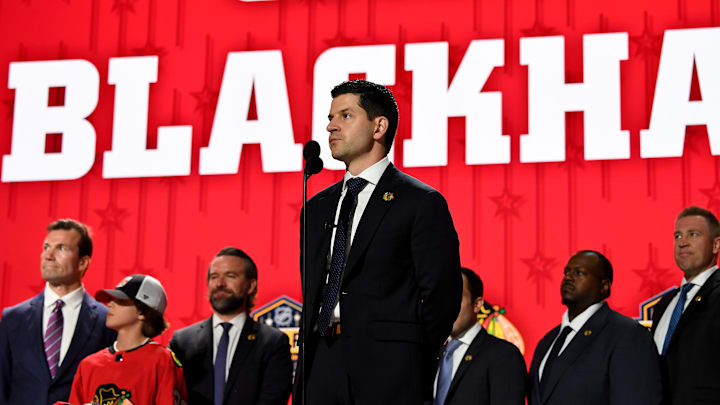Boston Bruins
The Bruins have next to nothing in available cap space at the deadline according to CapFriendly. Hey, the Hawks got Nick Foligno and Taylor Hall in the offseason because of the Bruins cap crunch.
Boston is trying to catch the Florida Panthers for the top spot in the Atlantic Division. They only have picks in the fourth through sixth round this year. They do not own their second and fourth-round selection in 2025. They have all their picks in 2026.
The Bruins, like the Maple Leafs, might be able to leverage their 2026 third-round choice to get the Hawks to help take on some salary cap money in a deal.
The Bruins have the third worst farm systems according to Wheeler (subscription required).
Dallas Stars
CapFriendly has the Stars with about $1.17 million in deadline cap space. The Stars are trying to hold off the Winnipeg Jets for first in the Central Division. They are also tied with the Canucks for the most points in the Western Conference standings.
The Stars do not have a lot of draft assets to work with. They only have their first-round pick and then a fifth and seventh in 2024. They also lack their second and fourth-round choice in 2025 and the rights to their 2025 and 2026 third-round are conditional.
They can offer up the 2026 second-round choice to the Blackhawks if they are desperate to get a trade to work and need a third-party, but that might be a huge overpay.
The Stars are Wheeler's 21st-best farm system (subscription required).
Edmonton Oilers
The Oilers have $2.3 million in cap space according to CapFriendly. They do not have the rights to their third-, fourth-, and seventh-round selections in 2024. They do have plenty of draft assets in 2025 and 2026 as they only traded away their 2025 second-round choice.
Wheeler has the Oilers farm system among the league's bottom 10 (subscription required).
